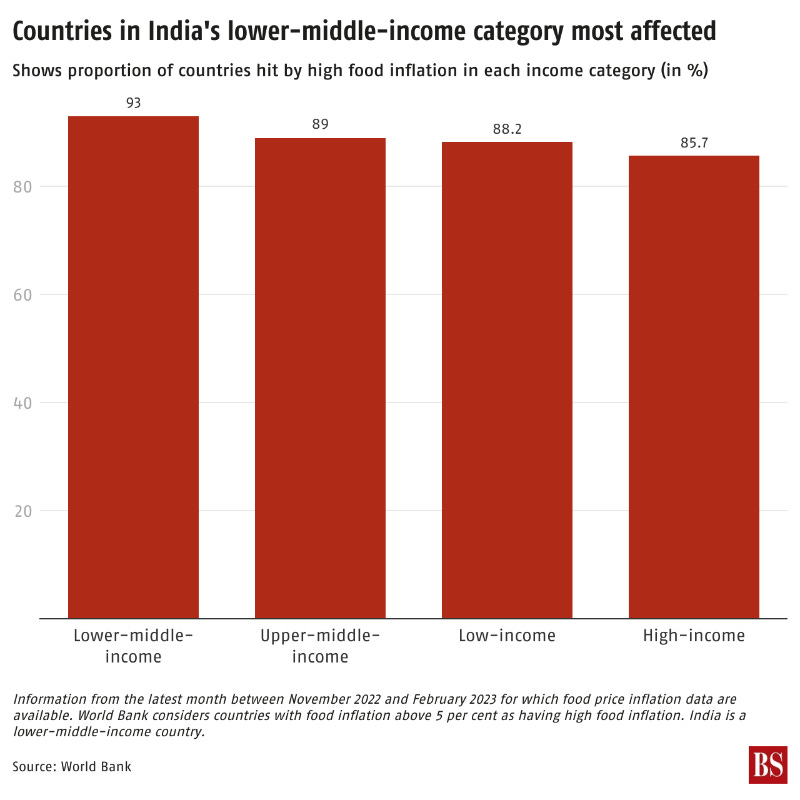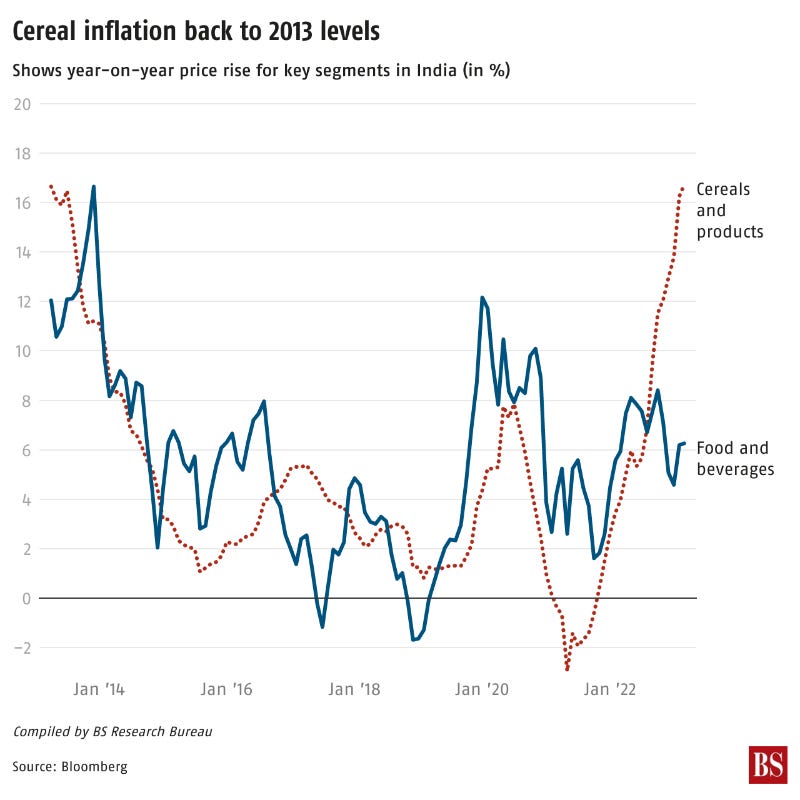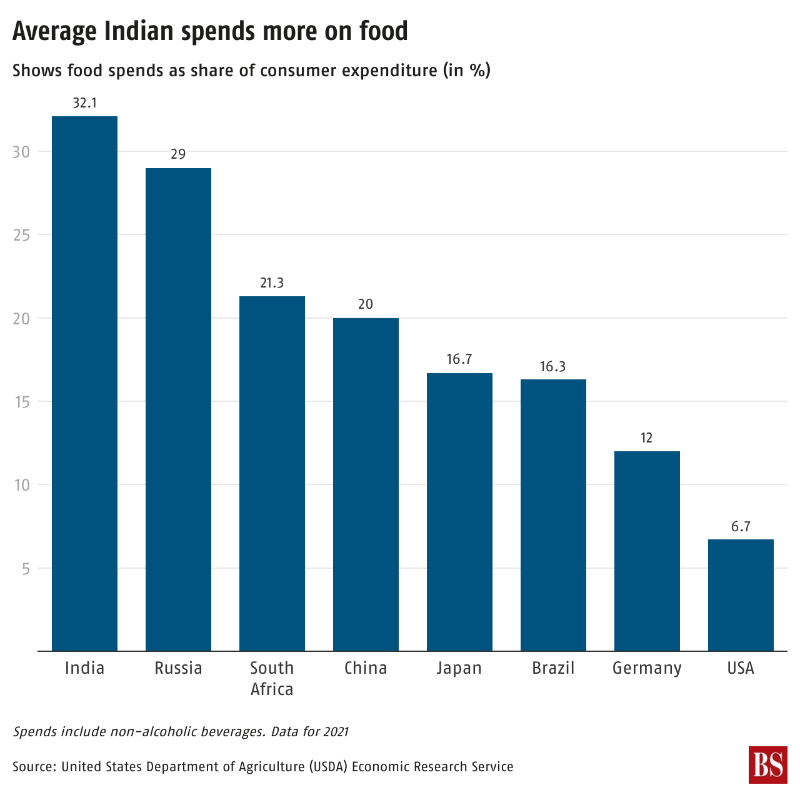India’s food inflation bites harder
Its average citizen is more affected than people in peer economies
A spectre is haunting many parts of the world and India isn’t spared: food inflation.
India’s cost of food and beverages was 6.26 per cent higher in February than the year before, pushing retail inflation up 6.44 per cent. Around 93 per cent of lower-middle income countries, including India, also reported high food inflation in excess of 5 per cent, according to a World Bank report last week, as seen in chart 1 (click image for interactive chart).
Cereals drive India’s food inflation, though the price of other food items like milk and milk products have also surged in recent times. Inflation for cereals was at 16.73 per cent compared to 9.65 per cent for milk and milk products in February 2023. Such inflation in cereals was last seen in 2013. Inflation this time is influenced by factors including higher use of wheat as feed in the European Union. The higher prices are despite the crop recording its second highest global production last year, according to the United Nations Food and Agriculture Organization. Indian wheat prices have risen at levels in excess of 25 per cent in 2023 (chart 2).
India is more vulnerable to rigid food inflation than many other peer economies. Nearly a third of an average Indian citizen's consumption budget is spent on food. This is higher than many emerging market peers including Russia (29 per cent share of food in consumer expenditure), South Africa (21.3 per cent), China (20 per cent) and Brazil (16.3 per cent). India’s 32.1 per cent share is also higher than large economies including Japan, Germany and the USA (chart 3).
World food prices have declined from their peak when war broke out last year in Ukraine, but remain 45 per cent higher than the average of the last two decades, according to the World Bank report.
The Black Sea Grain Initiative, which continued the world’s food and fertiliser supplies during the war, was extended on March 18. The renewal was shortened to 60 days from the earlier 120, complicating worries about global supplies.
Rain and hail storms may have affected India’s wheat crop, which may affect production.
With all this at play, India’s consumers may well have to brace for a stickier bout of higher prices.





